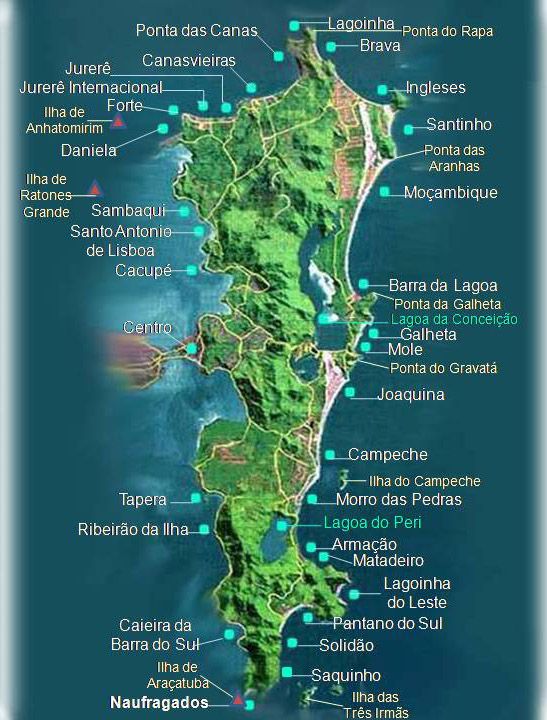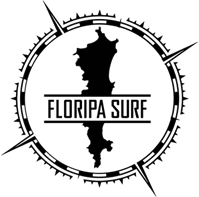The island of Santa Catarina is part of the municipality of Florianópolis and is located in the Atlantic Ocean, on the southern coast of Brazil, in the center of the coast of the state of Santa Catarina, between latitude 27° south and longitude 48° west. It is approximately 54 km long (north–south) and no wider than 18 km (east–west) to the north, totaling an area of 424.4 km².
Due to its proximity to the continent and because it is parallel to it, only the beaches facing the open sea receive waves.
Due to the large number of beaches, Floripa offers all types of waves for all levels of surfers. We have world-class waves like Campeche beach with perfect long and tubular rights, beginner waves like Barra da Lagoa and Açores, tumbling beaches with fuller waves like Mole beach, super tubular waves like Matadeiro and Riozinho do Campeche, big waves like Joaquina beach, isolated beaches, Secret spots, etc…
The beaches facing the continent are bays protected from the waves, being ideal for sailing.
The seasons of the year are well defined:
Summer is hot and humid with a predominance of northeast/east winds and storms can occur at the end of the day.
In autumn, the mornings and nights start to cool down, and cold fronts also start to appear, dry weather with beautiful sunny days and offshore winds in the morning.
In winter, temperatures drop significantly, the water cools and the south wind blows strongly. The weather alternates between rainy and fine days.
In spring, the weather starts to warm up, with strong winds, predominantly from the northeast and east, and rainy days.
ATTENTION: From May 15 to July 15, surfing is prohibited on most beaches due to the mullet fishing season. There is no scientific study that proves that surfers scare away the fish, but the prohibition goes beyond that. Even on days when there are no fish or the sea is too rough for fishermen to go out into the sea, they prohibit surfing out of pure anger at surfers… except for some beaches like Campeche, where fishermen are more advanced and allow surfing when there are waves, thus ensuring harmony between surfers and fishermen.
The ban harms tourism and local commerce, as many people stop coming to Florianópolis and other regions because of it, such as in Guarda, for example, where restaurants and inns are empty, a loss for many and a benefit for a few.


